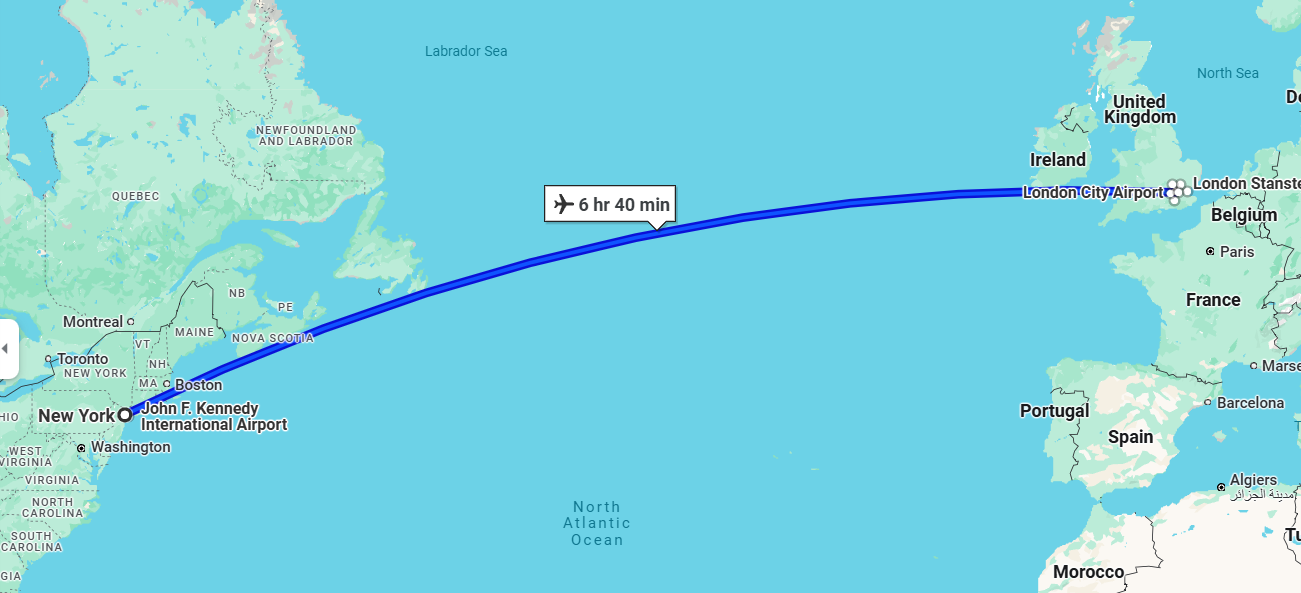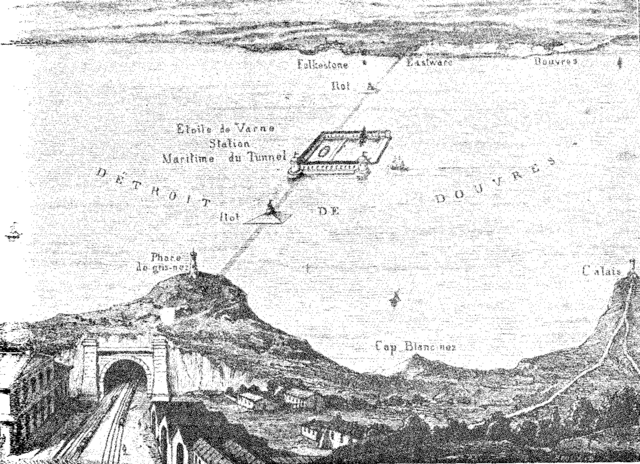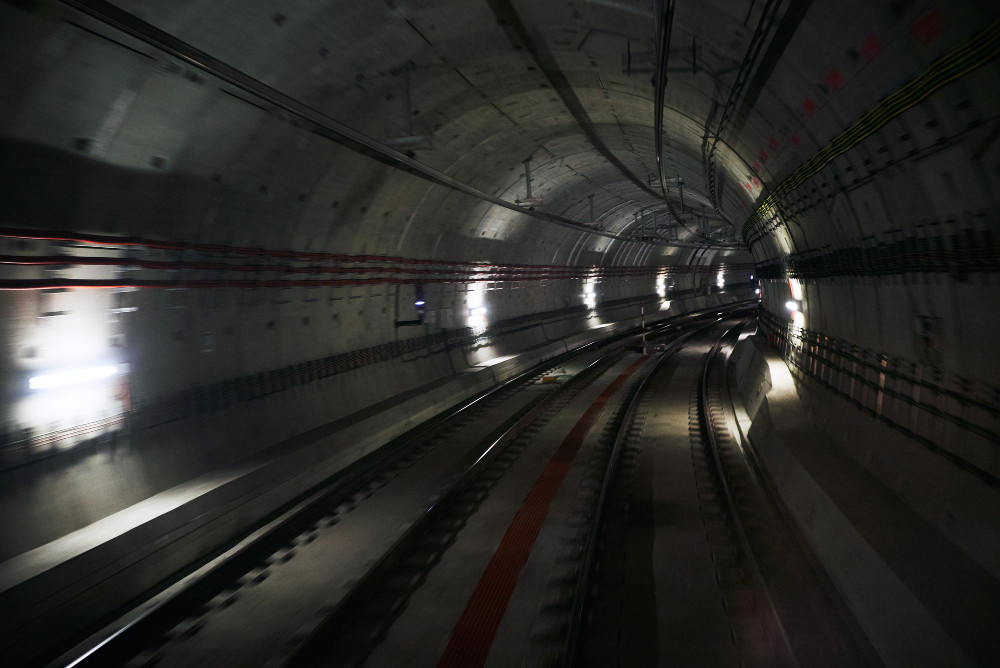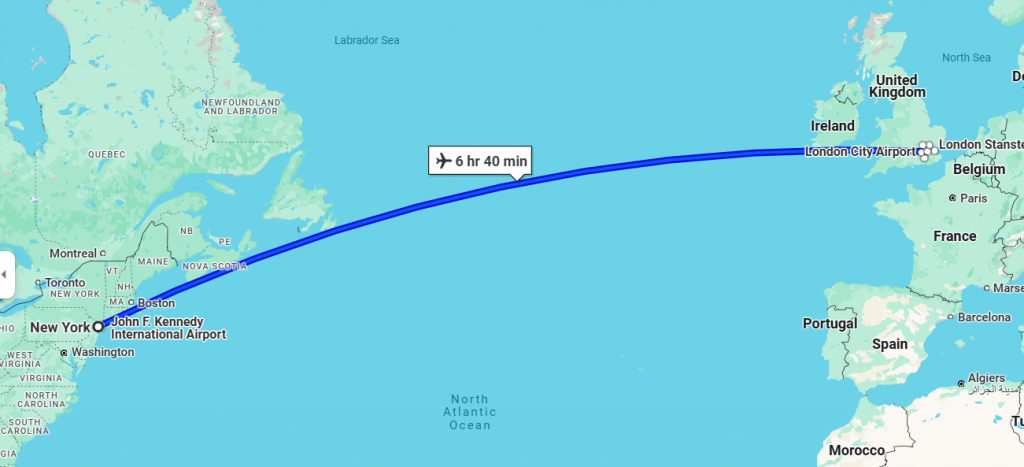This $19 Trillion Tunnel Under the Ocean Could Get You From London to NYC in 54 Minutes

© Google Maps
What would it take to build the transatlantic tunnel from London to New York?
Imagine boarding a train in London, sipping your coffee, and stepping off in New York just 54 minutes later. Sounds like science fiction, right?
Well, a groundbreaking proposal backed by Elon Musk and his tunnel-digging company, The Boring Company, claims this could soon be a reality. The catch? A jaw-dropping price tag of $19 trillion—more than five times the UK’s entire GDP.
But how feasible is this futuristic vision, and what would it take to make it happen?

The Transatlantic Tunnel: A Concept Centuries in the Making
The idea of a tunnel connecting Europe and North America isn’t new. In fact, it dates back to 1895, when Michel Verne, son of famed sci-fi author Jules Verne, penned a story about a high-speed transatlantic train.
Fast forward to today, and the concept has evolved into a tangible—albeit ambitious—proposal. The tunnel would stretch 3,400 miles (5,470 km) beneath the Atlantic Ocean, using cutting-edge “hyperloop” technology to propel magnetically levitating (maglev) trains at speeds exceeding 3,000 mph (4,800 km/h).
This technology isn’t entirely theoretical. Maglev trains are already operational in countries like Japan, Germany, and China, though their speeds pale in comparison to what’s needed for a transatlantic journey.
The real game-changer is the combination of maglev trains with vacuum-sealed tunnels, which eliminate air resistance and friction, allowing for unprecedented speeds.

The Engineering Challenges: A Herculean Task
While the technology exists, the engineering hurdles are monumental. The proposed tunnel would be over 140 times longer than the Channel Tunnel connecting the UK and France, which took six years and billions of dollars to complete.
Building a vacuum-sealed tunnel across the Atlantic would require navigating the Mid-Atlantic Ridge—a massive underwater mountain range formed by tectonic activity. This region is riddled with volcanic activity and shifting plates, making construction a daunting task.
Moreover, the cost of such a project is almost unimaginable. Elon Musk has claimed that The Boring Company could build the tunnel for “1,000 times less money,” but even a reduced price tag would likely run into the trillions. For context, the UK’s entire GDP is around $3 trillion.
The Channel Tunnel: A Blueprint for the Transatlantic Tunnel?
When discussing the feasibility of a Transatlantic Tunnel connecting London and New York, it’s impossible not to draw parallels to the Channel Tunnel—often referred to as the “Chunnel.”
This engineering marvel, completed in 1994, connects the United Kingdom and France via a 31.4-mile (50.5 km) undersea rail tunnel beneath the English Channel.
The first recorded proposal for a tunnel under the English Channel came in 1802 from French engineer Albert Mathieu-Favier, who envisioned a tunnel lit by oil lamps with horse-drawn carriages and even proposed an artificial midway island for resting and changing horses.
In 1856, another French engineer, Thomé de Gamond, advanced the idea with a detailed plan featuring ventilation shafts and railway tracks. This attracted the attention of influential figures like Queen Victoria and Napoleon III.

However, both proposals were shelved due to political tensions and military concerns during the Napoleonic Wars and beyond, delaying the project for over a century.
How Fast Can You Go Through It?
The Channel Tunnel offers one of the fastest and most efficient ways to travel between the UK and mainland Europe. If you’re taking the Eurostar passenger train, the journey through the tunnel itself takes approximately 20 to 35 minutes, depending on the specific route and service.

It remains one of the most ambitious infrastructure projects ever undertaken and serves as a potential blueprint for future underwater tunnels, including the proposed Transatlantic Tunnel.
The Channel Tunnel consists of three parallel tunnels: two for rail traffic and one service tunnel for maintenance and emergencies. It was constructed using massive tunnel-boring machines (TBMs) that drilled through chalk marl, a soft rock layer beneath the seabed.
The project took six years to complete and cost approximately £4.65 billion (equivalent to around £12 billion today). Despite its complexity, the Chunnel has become a vital transportation link, carrying millions of passengers and tons of freight annually between the UK and mainland Europe.
However, the Channel Tunnel’s challenges pale in comparison to what a Transatlantic Tunnel would face. The Chunnel spans a relatively short distance and operates at depths of up to 250 feet (75 meters) below sea level.
…
In contrast, a Transatlantic Tunnel would need to stretch over 3,400 miles (5,470 km) and navigate the Mid-Atlantic Ridge, a volatile undersea mountain range with active volcanic activity. Additionally, the sheer scale of construction, maintenance, and cost would dwarf that of the Chunnel.

Yet, the success of the Channel Tunnel proves that undersea tunnels are possible with current technology. It also highlights the importance of international collaboration, as the project required close cooperation between the UK and France.
For the Transatlantic Tunnel to become a reality, similar partnerships—and a willingness to tackle unprecedented engineering challenges—would be essential.
In many ways, the Channel Tunnel is a testament to human ingenuity and a reminder that even the most ambitious projects can succeed with determination, innovation, and collaboration. Could it inspire the next great leap in global transportation?
A Glimpse into the Future of Travel
Despite the challenges, the potential benefits are staggering. A 54-minute journey between two of the world’s most iconic cities would revolutionize global travel, commerce, and connectivity.
It could also pave the way for similar hyperloop networks across the globe, reducing travel times and carbon emissions.
While the Transatlantic Tunnel remains a distant dream, it’s a testament to human ingenuity and ambition. Whether or not it becomes a reality, the idea itself pushes the boundaries of what we believe is possible—and that’s what makes it so captivating.
So, would you hop on a train to New York or London if it took less than an hour? The future might just be closer than we think.

You might also want to read: Amazon Is the First Company Ever to Lose $1.000.000.000.000


